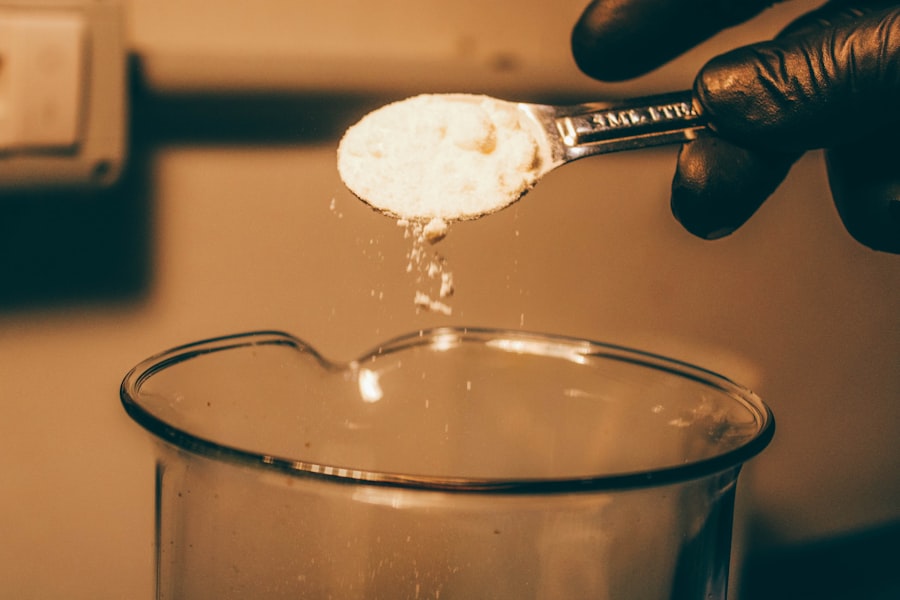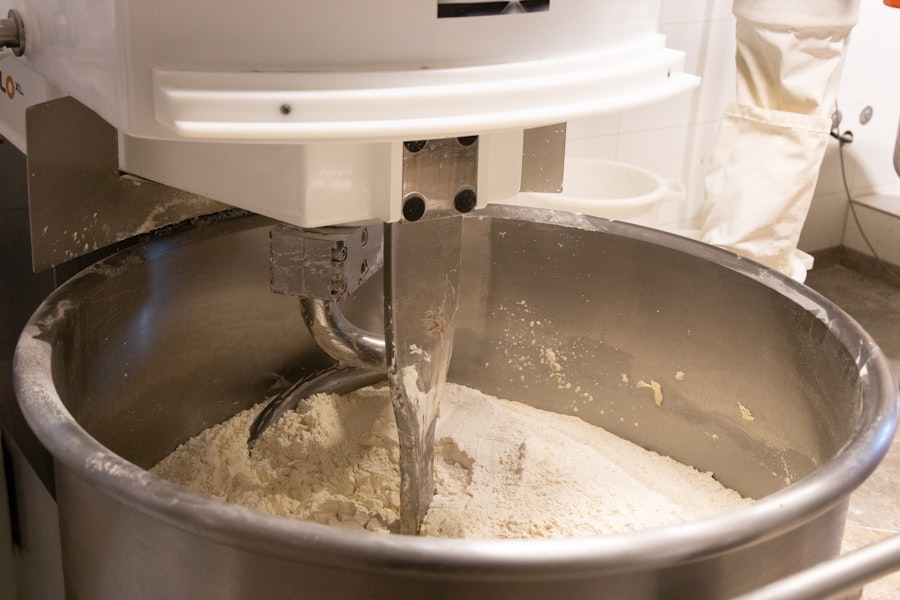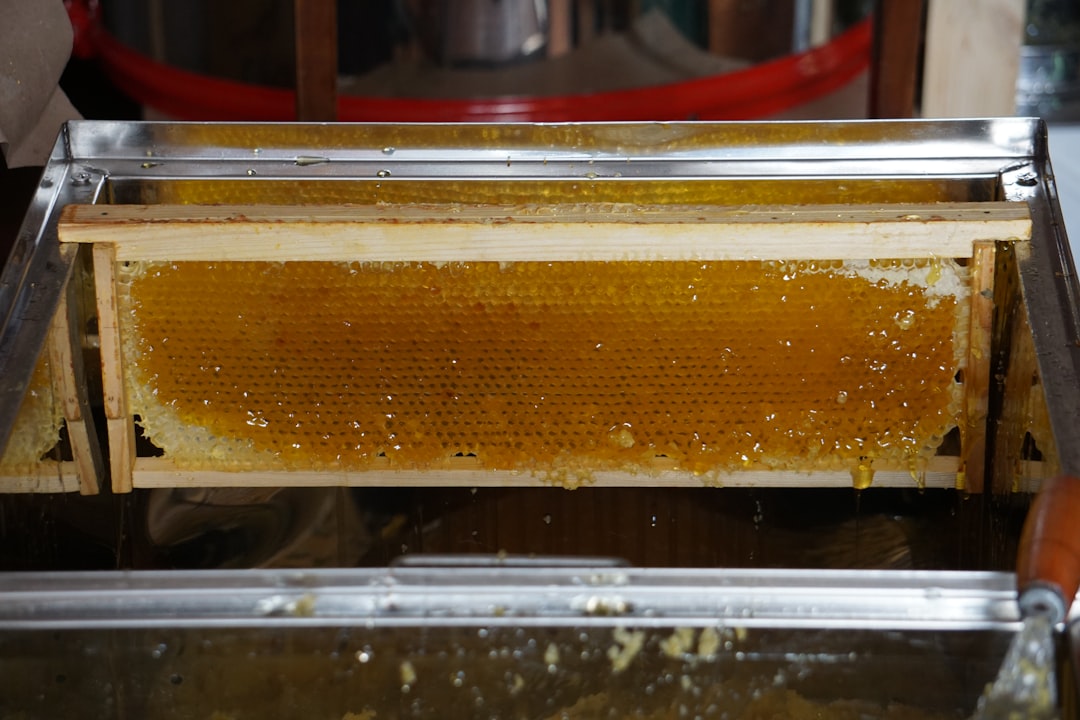Yeast extract is a natural ingredient derived from the process of yeast fermentation, primarily using Saccharomyces cerevisiae, the same yeast used in baking and brewing. This ingredient is rich in amino acids, vitamins, and minerals, making it a popular choice in the food industry. It is often used as a flavor enhancer, providing a savory taste known as umami, which is one of the five basic tastes alongside sweet, sour, bitter, and salty.
You may find yeast extract in various products, including soups, sauces, and snack foods, where it contributes to a more complex flavor profile. The production of yeast extract involves breaking down the yeast cells through autolysis or hydrolysis. During this process, the cell walls are broken down, releasing proteins and other compounds that contribute to its flavor and nutritional content.
The result is a thick paste or powder that can be easily incorporated into various dishes. As you explore the world of food ingredients, understanding yeast extract’s role can enhance your appreciation for the flavors in your favorite meals.
Key Takeaways
- Yeast extract and MSG are both flavor enhancers but differ in origin and composition.
- Yeast extract contains natural amino acids and nutrients, while MSG is a synthesized sodium salt of glutamic acid.
- Both enhance umami flavor, but yeast extract offers additional nutritional benefits.
- Health concerns exist for both, with MSG often linked to sensitivity reactions and yeast extract sometimes containing naturally occurring glutamates.
- Culinary uses vary: yeast extract is used in spreads and soups, whereas MSG is commonly added to processed foods and seasonings.
What is Monosodium Glutamate (MSG)?
Monosodium glutamate, commonly known as MSG, is a flavor enhancer that has been widely used in cooking for decades. It is the sodium salt of glutamic acid, an amino acid that occurs naturally in many foods, including tomatoes and cheese. MSG is known for its ability to enhance the umami flavor in dishes, making it a popular addition to Asian cuisine and processed foods.
When you encounter MSG in ingredient lists, it’s often associated with a savory taste that can elevate the overall flavor experience of a meal. The history of MSG dates back to 1908 when it was first isolated by Japanese chemist Kikunae Ikeda. He discovered that the flavor of kombu seaweed was due to glutamic acid and subsequently developed a method to produce MSG commercially.
Since then, it has become a staple in kitchens around the world. As you delve into culinary practices, recognizing MSG’s origins and its role in flavor enhancement can provide valuable insights into how certain dishes achieve their distinctive tastes.
Flavor Enhancing Properties of Yeast Extract

Yeast extract is celebrated for its unique ability to enhance flavors in a variety of dishes. Its rich umami profile can intensify the taste of savory foods, making it an essential ingredient in many recipes. When you add yeast extract to soups or sauces, you may notice how it deepens the overall flavor without overpowering other ingredients.
This subtle enhancement can create a more satisfying eating experience, as it rounds out the taste and adds complexity. Moreover, yeast extract contains naturally occurring glutamates, which contribute to its flavor-enhancing properties. These compounds interact with your taste buds to create a savory sensation that can make even simple dishes more appealing.
As you experiment with cooking, consider incorporating yeast extract into your meals to discover how it can transform ordinary recipes into extraordinary culinary delights.
Flavor Enhancing Properties of Monosodium Glutamate (MSG)
| Property | Description | Effect on Flavor | Measurement/Metric | Typical Range |
|---|---|---|---|---|
| Umami Intensity | Ability to enhance savory taste | Increases perception of umami flavor | Relative Umami Intensity (RUI) | 1.5 – 3 times baseline without MSG |
| Flavor Enhancement Threshold | Minimum concentration to detect flavor enhancement | Threshold concentration for flavor impact | Concentration (mM) | 0.1 – 0.3 mM |
| Synergistic Effect with Nucleotides | Interaction with inosinate and guanylate | Amplifies umami taste beyond MSG alone | Synergy Factor | Up to 5 times enhancement |
| Saltiness Enhancement | Ability to enhance salty taste perception | Reduces need for added salt | Saltiness Perception Increase (%) | 10% – 20% |
| Bitterness Suppression | Reduces perception of bitter flavors | Improves overall flavor balance | Bitterness Reduction (%) | 15% – 30% |
| Flavor Persistence | Duration of enhanced flavor after ingestion | Prolongs savory taste sensation | Time (seconds) | 30 – 60 seconds |
Monosodium glutamate is renowned for its potent flavor-enhancing capabilities. It works by stimulating the umami receptors on your taste buds, which can significantly elevate the taste of various dishes. When you sprinkle MSG onto your food or incorporate it into recipes, you may find that it brings out the natural flavors of ingredients, making them more pronounced and enjoyable.
This quality makes MSG particularly popular in Asian cuisine, where it is often used to enhance the flavors of stir-fries, soups, and sauces.
This characteristic allows chefs and home cooks alike to create dishes that are rich and satisfying.
As you explore different culinary techniques, consider how MSG can be utilized to elevate your cooking and bring out the best in your ingredients.
Nutritional Content of Yeast Extract
Yeast extract is not only valued for its flavor-enhancing properties but also for its nutritional benefits. It is a source of essential nutrients such as B vitamins, including B1 (thiamine), B2 (riboflavin), B3 (niacin), B5 (pantothenic acid), B6 (pyridoxine), and B12 (cobalamin). These vitamins play crucial roles in energy metabolism and overall health.
When you incorporate yeast extract into your diet, you may be providing your body with these vital nutrients that support various bodily functions. In addition to B vitamins, yeast extract contains protein and amino acids that are beneficial for muscle repair and growth. It also has minerals like potassium and magnesium that contribute to overall well-being.
As you consider your dietary choices, recognizing the nutritional value of yeast extract can help you make informed decisions about incorporating this ingredient into your meals for both flavor and health benefits.
Nutritional Content of Monosodium Glutamate (MSG)

Monosodium glutamate is primarily known for its flavor-enhancing properties rather than its nutritional content.
Its primary component is sodium, which can be a concern for those monitoring their salt intake.
However, when used in moderation, MSG can be a useful tool for enhancing flavors without adding excessive calories or fat to your meals. While MSG does not provide substantial nutritional benefits on its own, it can play a role in making healthier foods more palatable. For instance, if you are trying to reduce sodium intake by using less salt in your cooking, incorporating MSG can help maintain flavor without compromising on taste.
As you navigate your dietary choices, understanding the role of MSG in flavor enhancement can help you strike a balance between taste and nutrition.
Health Concerns and Controversies Surrounding Yeast Extract
Despite its popularity as a flavor enhancer, yeast extract has not been without controversy. Some individuals may experience sensitivities or allergic reactions to yeast extract due to its glutamate content. Symptoms can include headaches or gastrointestinal discomfort in sensitive individuals.
As you explore different food products containing yeast extract, it’s essential to pay attention to how your body reacts and consult with a healthcare professional if you have concerns. Additionally, there are discussions surrounding the use of yeast extract in processed foods. Some critics argue that its presence may indicate a lack of fresh ingredients or quality in food products.
However, many manufacturers use yeast extract responsibly to enhance flavors while maintaining overall product quality. As you make choices about what to eat, being informed about these concerns can help you select products that align with your health preferences.
Health Concerns and Controversies Surrounding Monosodium Glutamate (MSG)
Monosodium glutamate has faced scrutiny over the years due to claims linking it to various health issues, including headaches and allergic reactions. This phenomenon is often referred to as “Chinese Restaurant Syndrome,” where individuals report symptoms after consuming foods high in MSG. However, extensive research has largely debunked these claims, indicating that MSG is safe for most people when consumed in moderation.
Despite this reassurance from health organizations like the FDA and WHO, some individuals still express concerns about MSG’s potential effects on health. If you are sensitive to MSG or have experienced adverse reactions in the past, it may be wise to limit your intake or avoid it altogether. Understanding these controversies allows you to make informed decisions about incorporating MSG into your diet while considering your personal health needs.
Culinary Uses of Yeast Extract
Yeast extract finds its way into numerous culinary applications due to its versatility and flavor-enhancing properties. You might encounter it in soups and broths where it adds depth and richness to the overall taste profile. Additionally, it is commonly used in sauces such as gravies and marinades to create a savory base that complements various dishes.
When preparing meals at home or dining out, keep an eye out for yeast extract as an ingredient that can elevate your dining experience. Beyond traditional uses in savory dishes, yeast extract can also be found in snack foods like chips and crackers. Its ability to enhance flavors makes it an attractive option for manufacturers looking to create appealing products that resonate with consumers’ taste preferences.
As you explore different cuisines and food products, consider how yeast extract contributes to the flavors you enjoy and how it can inspire your cooking endeavors.
Culinary Uses of Monosodium Glutamate (MSG)
Monosodium glutamate is widely utilized across various culinary traditions for its ability to enhance flavors significantly. In Asian cuisine, MSG is often added to stir-fries, soups, and sauces to amplify umami notes and create a more satisfying dish. If you’ve ever enjoyed a bowl of ramen or a plate of fried rice bursting with flavor, there’s a good chance that MSG played a role in achieving that delicious taste.
In addition to Asian dishes, MSG can also be used creatively in Western cooking. You might consider adding it to marinades or seasoning blends for meats and vegetables to enhance their natural flavors before grilling or roasting. As you experiment with different recipes, incorporating MSG thoughtfully can help you achieve a depth of flavor that elevates your culinary creations.
When comparing yeast extract and monosodium glutamate as flavor enhancers, both have their unique advantages and applications in cooking. Yeast extract offers not only flavor enhancement but also nutritional benefits due to its rich content of B vitamins and amino acids. It serves as an excellent option for those looking for natural ingredients that contribute both taste and nutrition to their meals.
On the other hand, monosodium glutamate stands out for its potent ability to amplify umami flavors without adding significant calories or fat. While some individuals may have concerns about MSG’s safety or potential side effects, extensive research supports its safety for most people when consumed in moderation. Ultimately, your choice between yeast extract and MSG may depend on personal preferences regarding taste, dietary needs, and any sensitivities you may have.
As you navigate the world of flavor enhancers in your cooking journey, understanding the characteristics of both yeast extract and monosodium glutamate will empower you to make informed decisions that align with your culinary goals and health considerations. Whether you’re enhancing a homemade soup or seasoning a stir-fry, both ingredients offer unique contributions that can elevate your meals to new heights.
In the ongoing debate about flavor enhancers, a related article that delves into the differences between yeast extract and monosodium glutamate (MSG) can be found on Hey Did You Know This. This article explores the nutritional profiles, flavor profiles, and potential health implications of both ingredients, providing valuable insights for consumers looking to make informed choices about their food. For more information, you can read the article [here](https://www.heydidyouknowthis.com/sample-page/).
WATCH THIS! The Secret Ingredients in Everything You Eat: Unmasking the “Natural Flavor” Illusion
FAQs
What is yeast extract?
Yeast extract is a natural food ingredient made from the contents of yeast cells, typically Saccharomyces cerevisiae. It is used as a flavor enhancer and contains amino acids, peptides, vitamins, and minerals.
What is monosodium glutamate (MSG)?
Monosodium glutamate (MSG) is a flavor enhancer derived from glutamic acid, an amino acid found naturally in many foods. It is commonly used to enhance the umami taste in savory dishes.
How do yeast extract and MSG differ in terms of composition?
Yeast extract contains a complex mixture of amino acids, peptides, vitamins, and minerals, while MSG is a single compound—monosodium salt of glutamic acid—used primarily for its umami flavor.
Are yeast extract and MSG used for the same purpose?
Both yeast extract and MSG are used to enhance the flavor of foods, particularly to boost umami taste. However, yeast extract also adds nutritional value due to its vitamins and minerals.
Is yeast extract considered natural?
Yes, yeast extract is considered a natural ingredient as it is derived from yeast cells through a natural extraction process.
Is MSG safe to consume?
MSG is generally recognized as safe (GRAS) by food safety authorities such as the FDA when consumed in typical amounts found in food.
Can people with allergies or sensitivities consume yeast extract and MSG?
Some individuals may be sensitive to MSG or yeast extract and experience symptoms like headaches or digestive discomfort. People with yeast allergies should avoid yeast extract.
Do yeast extract and MSG contain gluten?
Yeast extract is typically gluten-free if derived from gluten-free sources, but it is important to check product labels. MSG itself does not contain gluten.
Which is better for cooking: yeast extract or MSG?
The choice depends on the desired flavor profile and dietary preferences. Yeast extract provides a more complex flavor and additional nutrients, while MSG offers a pure umami boost.
Can yeast extract be used as a substitute for MSG?
Yes, yeast extract can be used as a natural alternative to MSG to enhance umami flavor in recipes, though the taste and intensity may differ.
